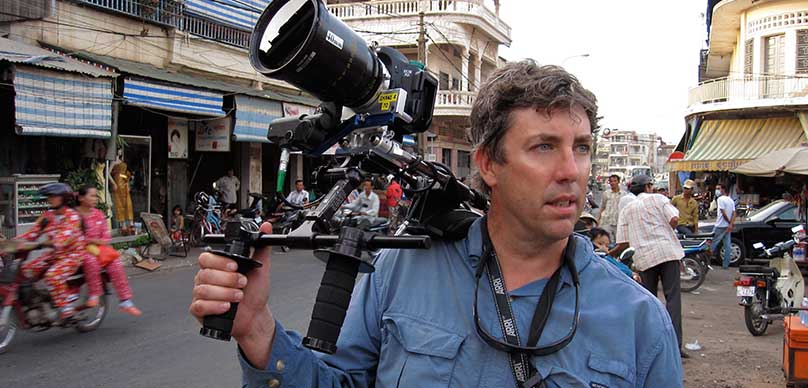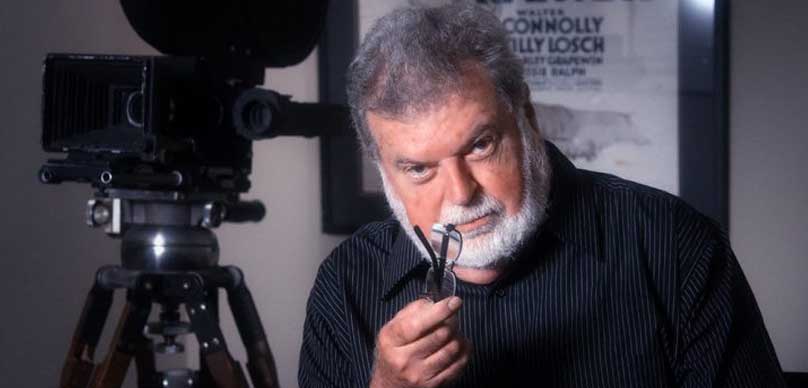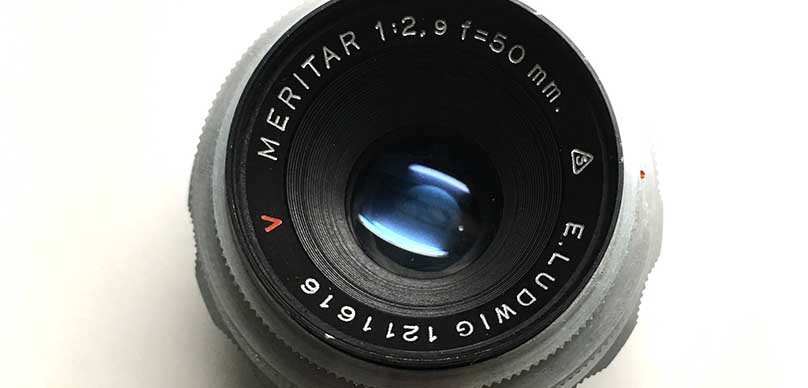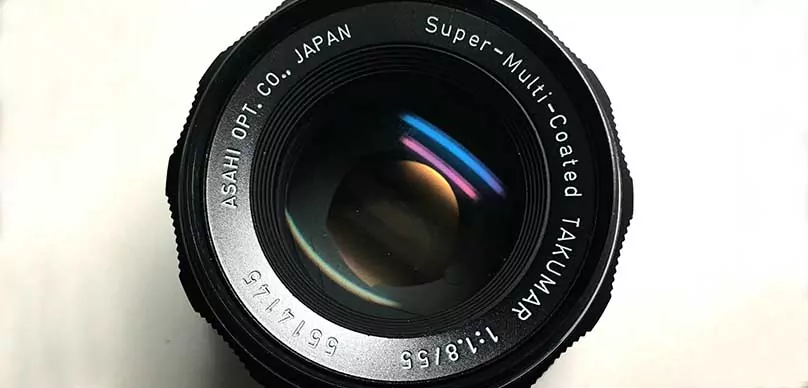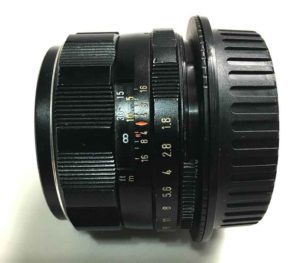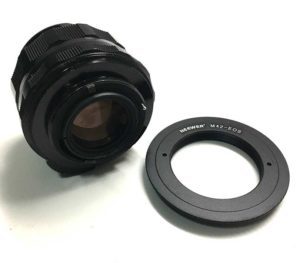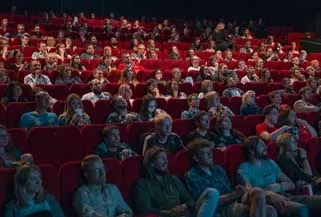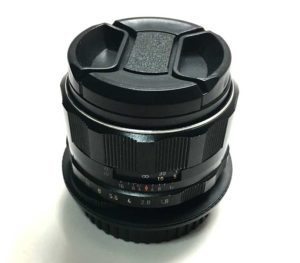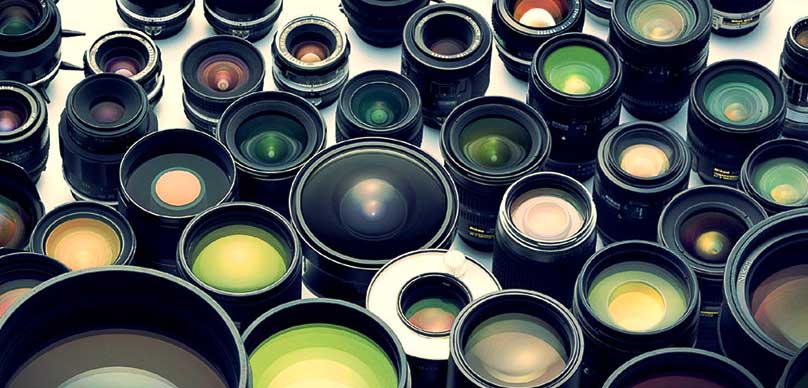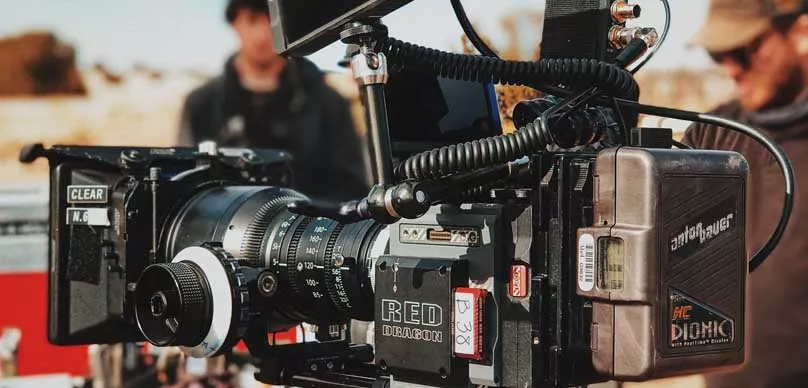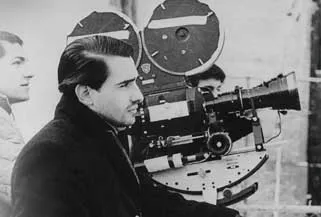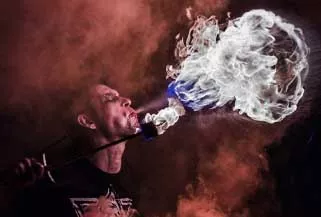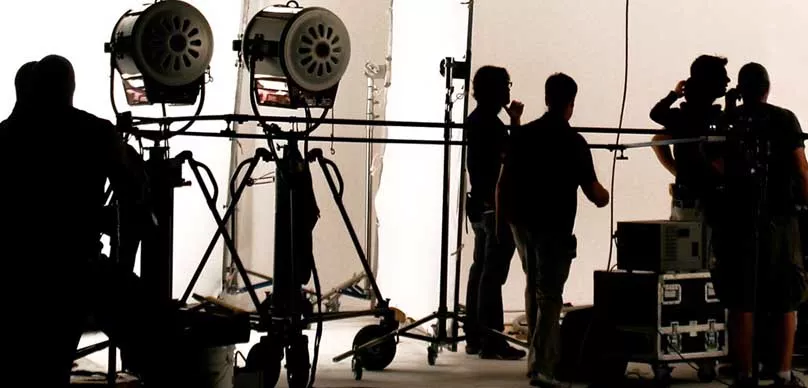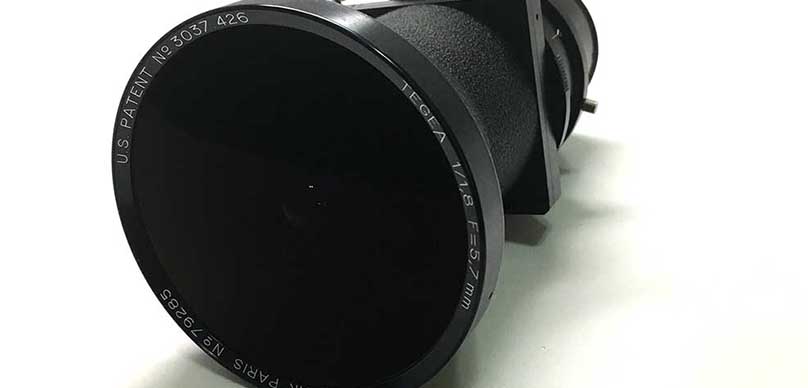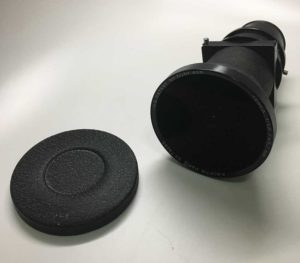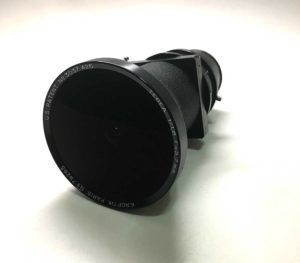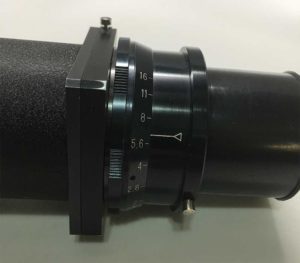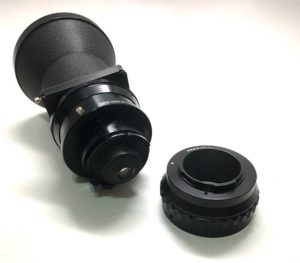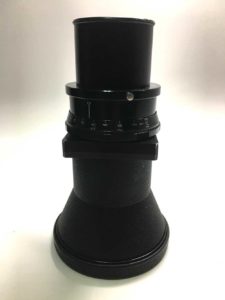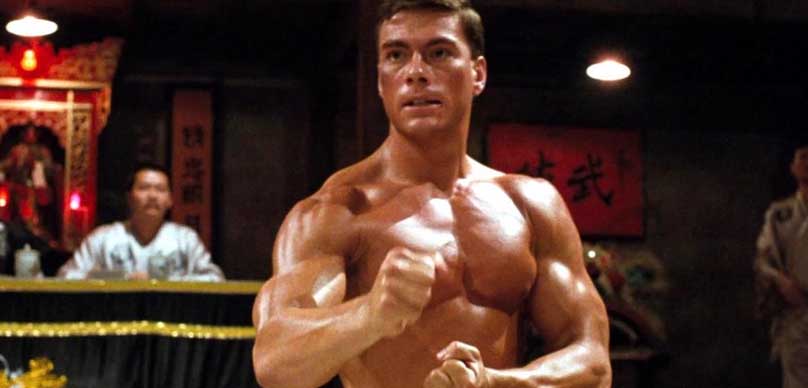My guest today has done it all. He’s gone from cinematography on small-budget indie films to $200 million-plus projects which is literally goals for many in this line of business.
Director and cinematographer, Shane Hurlbut‘s thirty-plus experience and success as a storyteller is categorically innovative to the craft and inspiring for other filmmakers.
Shane’s latest film Love Hard is set for digital release via Netflix this November. This romantic comedy is about a young woman in Los Angeles who falls for a man on a dating app and travels to his East Coast hometown to surprise him for Christmas but discovers that she’s been catfished. Her crush actually does live in the same town, and the guy who duped her offers to set them up if she pretends to be his girlfriend for the holidays.
He’s an esteemed member of the Academy of Motion Picture Arts and Sciences and the American Society of Cinematographers. The ASC recognized Shane’s work very early on in his carrier from his film The Rat Pack and he was one of their youngest cinematographer nominees.
Shane Co-founded the Hurlbut Academy alongside his wife and business partner, Lydia Hurlbut. Their platform offers professional online filmmaking education and mentoring materials, curated by other filmmakers. This interactive library has collaborated with filmmakers to develop about 50 Courses, 400+ Lessons, and 700+ hours of instruction videos.
Some of the top projects he’s worked on include Drumline, We Are Marshall, Terminator Salvation, Act Of Valor, and Game Of Thrones.
The highly acclaimed HBO series, Game of Thrones was hailed for its spectacular cinematography. Outstanding, if you will. In 2012, Shane served as director of photography for their Game of Thrones: You Win or You Die – Inside the HBO Series that was an interview for major cast and crew members. Wherein, characters, families, kingdoms, and plots were explained with an in-depth look at season one. And what viewers could expect from season two.
Some of Shane’s work includes NetFlix’s Rim of The World, Holidate, There Is No Place Like Home, Fathers, and Daughters, the pilot episode for SyFy’s Resident Alien, and Disney+ original film Safety.
Safety was inspired by the true story of Ray-Ray McElrathbey, the film follows a freshman football player for Clemson University who secretly raised his younger brother on campus after his home life became too unsteady.
His passion for filmmaking goes back to his childhood. Like the cool kid he still is, Shane did morning announcements at our high school and DJ for a local radio station. As you can imagine, he started doing dances, proms, and homecoming across the local upstate New York area.
He earned part of his education at a small community college where he fell in love with radio, TV production, and so forth. A scholarship to study film at Emerson College in Boston sealed the deal for Shane.
In 2002, Shane’s box office hit film, Drumline became a major splash. Nick Cannon stars as a young drummer who enters the fictional Atlanta A&T University and bumps heads with the leader of his new school’s drum section. A fish-out-of-water comedy about a talented street drummer from Harlem who enrolls in a Southern university, expecting to lead its marching band’s drumline to victory. He initially flounders in his new world, before realizing that it takes more than talent to reach the top.
Lots of knowledge bombs from Shane in this conversation, You don’t want to miss out. Enjoy my chat with Shane Hurlbut.
Right-click here to download the MP3
Alex Ferrari 0:03
I like to welcome to the show Shane Hurlbut. How you doing Shane?
Shane Hurlbut 0:06
Alex, how are you? I'm doing amazing. I'm doing frickin fantastic.
Alex Ferrari 0:13
I feel that's the pandemic talking, sir.
Shane Hurlbut 0:19
I'm want to I love to stay positive in every way, shape and form. And one of the things that I was told by a mentor years ago is like, everyone always comes in to work. And they always ask you, how are how you're doing and I only have two words, frickin fantastic. Every single day. It sets the bar.
Alex Ferrari 0:39
That's a great, that's a great piece of advice. And it does it does. It does set the day because if you're the cinematographer, you walk on set and your crews like, how'd you do and you're like, Man, it's gonna be a rough day. That's exactly kills, kills the day kills the day
Shane Hurlbut 0:52
kills the day. But when you say, you know what, because a lot of times I'll be walking in and you know, electric had come in and say, Hey, Shane, how you doing? I go, I'm frickin fantastic. How are you? And they're like, Whoa, this is gonna be amazing day. And it just never changes.
Alex Ferrari 1:08
A good piece of advice as directors listening as well. How you doing? freakin fantastic. I love it.
Shane Hurlbut 1:15
Yeah, stay positive. Stay positive. So
Alex Ferrari 1:17
Shane, your career has been very man, you've gone from indie stuff to all the way to $200 million plus projects. You've you've done, you've done it all. Pretty much. And that can't be done with us in cinematography. How did you get started, man?
Shane Hurlbut 1:35
Yeah, that was a interesting journey. I thought I was gonna be a DJ.
Alex Ferrari 1:41
I've never heard that before.
Shane Hurlbut 1:43
Oh, yeah, it's a good one. So I was I started doing the morning announcements at our high school. And everyone was like, wow, you got a really good voice, you should, you know, go for radio and. And up in upstate New York, we had this radio station that had this incredible guide. And I think it was like 94 rock, you know, and it was a station that I listened to all the time. So I started to become a DJ. So I started doing dances and a prom, and homecoming and all these different things, and went all over the local upstate New York area. And then when I decided to go to college, I was like, you know, I don't want to really burn my parents money. They were kind enough to say they would help me with my education. So I was like, let me test the waters. Let's meet. Let me see if I like this. So I went to a small community college just to see if I really fell in love with radio. Well, the first year was radio, totally loved it. The second year was television. And the television just blew my mind. That's where it just started to open up these kind of ideas and creative inspiration, everything. And then a friend of mine was directing. He was in the USC directing program. And he came back to our hometown, and he was doing a small movie that summer. And I just wanted to be a part of it in any way I could. And I was a PA and then I was a little I was a grip. And I was an electric and I was doing everything I could. And at that point, I got in with a full ride scholarship to Emerson College in Boston, and I went there. And that was where I just fell in love with film. And but the funny thing is, is I hated cinematography. I thought I was going to be a producer because I could I could convince anybody to do anything I wanted. And I was good with numbers.
Alex Ferrari 3:50
Fair enough,
Shane Hurlbut 3:51
right? I had that passion. I was positive. I was like, all right, you know, I could sell anything as well, you know, so I was like, all right. And you know, after about three months of me wearing my mom got me a nice three piece suit. And I was like pounding the pavement in Boston knocking on doors. And every one of them was just slammed in my face saying, you know, no, no, I went back and I said, Alright, let me go back to the internship that I had, which was at a local grip, electric and camera house in Boston. And that's where I started and I started to fall in love with grip and lighting and camera. And then I got to a point where within three months, I was running the whole rental division. And then I decided that I was starting to go out on jobs because I came from a farm, right? So that's my upbringing. I was we had like a 300 acre farm in upstate New York. And so I could drive 10 ton trucks, 40 footers, whatever it was, I could drive and I started driving trucks and I was the grip truck driver. I started going out, I was managing the rental division and also going out on jobs. And quickly I saw that the only way I was going to move up in Boston is if the guy or the girl that was above me died. So I knew it was a very limited pool there. So I, you know, my fiance at the time, who was my high school sweetheart, Lydia, who I met at three years old. I said, Lydia, let's go to LA, let's, you know, make this mission, this, this Exodus out of the East Coast and go to the west coast. And that's what we did. And I started right back at the bottom again, working in a small little rental house. And then I got a job that they asked me to be the grip truck driver, which meant I had to leave my job at the rental house, which was, you know, I finally had a full time job and I was starting to bring in some money, whoo, $5 an hour on steel toed boots and T shirts, jeans, working in the warehouse. But I finally said okay, I'm going to go for it. So I got on this feature. And this feature was called Phantasm. Two. Ball is back nice. And I worked as a grip truck driver, and I was averaging about 18 hour days, I was getting $350 a week. So it ended up being like, you know, 79 cents an hour or something like that when it was all said. So that was my break in and when I was you know, I was because I knew the truck and organizing everything. I got a call on set. Terry Wimmer, the key grip, no shade run me in an 18 by 24 flag. So I ran in, grabbed the flag off the truck and ran it in I was going down the steps into the crematorium set. And this best boy electric, Brian Coyne very good friend of mine is an amazing director of photography and directors. Well, he's walking up the stairs. And he goes, would you be scared? And I go, Brian, what the hell you're talking about. I gotta run this flag down into Terry. He goes. Would you be scared in the theater? Look, every nook and cranny is lit. There's no shadow. It was like cam from that point on. All I looked at was light. And I went from a grip truck driver in 1988 to shooting my first music video for Nirvana Come as you are in 1991 So three years, I aspired and it just from that on it was just off to the races. That's
Alex Ferrari 7:54
awesome. Well, what was it like shatter Nirvana man? I mean, that must have been
Shane Hurlbut 7:58
three I did come as you are I did in bloom and I did lithium. I did Stone Temple Pilots Vaseline interstate love song. You know, we did
Alex Ferrari 8:13
all the 90s all the great 90s
Shane Hurlbut 8:15
grunge era. Yeah, it was really hot on the grunge era.
Alex Ferrari 8:18
That's That's amazing. I have to ask you real quick when you were when you were coming up in the grip departments. Did you ever did anyone ever just point over to a pile of cables that were about a mile long and said detangle those for me? Oh, yes. So did I
Shane Hurlbut 8:38
absolutely. And yeah, there were a lot of lot of crazy gigs I got myself into Condor operation was the worst for me because you know they put you up in that Condor at 90 feet in the air. And I'll never forget one day it was one of those stories that you remember back in your history of like oh my god, I could have died kind of moment. I was working on some really bad you know D movie for deferred pay. Big thing when I was getting
Alex Ferrari 9:14
it. Did you get that? Did you get the defer pay? Oh, they never
Shane Hurlbut 9:18
did like 20 of them like they never got paid to die. So I'm in this kind door in the wind starts kicking up and it's got to 18 K's in it. And the gaffer says, you know, we need to bring it down. So I'm like, I go I need to come down. This is way before all the you know, high tech wind devices, everything and all the beautiful safety things that we have now that this would have never happened but I was freaking out because the basket was moving around like crazy up there. And he's like, you know You're not coming down, it's it's fine, you know? And I said, Okay, you know, and all of a sudden this big wind gust came up. And all of a sudden, that Condor just started to go. No. So the thing starts slowly going, and it starting to pick up steam and pick up steam and pick up steam. And I'm just looking and I'm like, Okay, I'm gonna end it's over a ledge, right? It's over like this ravine, no. And that thing's just gonna go right over it, right. So I'm thinking to myself, okay, that's gonna crush everyone down below me and everything is coming down. So at about 20 feet, I disconnect my safety harness, and I jump. So I land, you know, and roll, I you know, just to the side of the ravine, so I don't go off of it. And this lift literally comes down and parallels. And everyone it was like, it was watching paint dry, even though it happened a lot faster, but it was like the, and that it just hung there. And and then all of a sudden was like, that just started gathering steam, you know, and everything. And then it just went like this and the 18k shot out of them. And it was the coolest lighting effect I've ever seen in my life because the ADK boom, and then everything went black.
Alex Ferrari 11:30
Oh my god. The gaffer
Shane Hurlbut 11:33
came over to me and he started yelling at me like yelling at me I was killed myself and I was gonna kill everyone else do because this thing would have gone right over the ravine it was gonna take out the whole camera department. Oh my god. Yeah, he yelled at me. Yeah, that was that's that's how it was done back then.
Alex Ferrari 11:56
So, you literally I mean, if you would have been it could have easily instead of stopping you could have kept going because of your weight.
Shane Hurlbut 12:02
Oh, yeah. would have kept on going because, you know, here was the this we are shooting on a road like this. And the Condor was out like this backlighting it up like so I was going like this over the ravine with the 18k. So I jumped just to the side of the road and rolled down this thing. So would have gone over, caught that neck and then the whole Condor would have gone over the edge.
Alex Ferrari 12:27
Oh my god, it's insane. What what he was this was in the 1980s. Yeah. Oh, yeah. That's the 80s were how we survived the 80s as a general statement is it's like, the kids today are like looking around like, oh, oh, this hurts or that hurts. I'm like, Are you kidding me? What we had a you are just looking at our playgrounds. In the 70s, and 80s.
Shane Hurlbut 12:55
I know our playgrounds were literally torture chambers. Now they're like, you know, they got the foam roller everywhere. So if you fall and you bounce, and it's beautiful,
Alex Ferrari 13:07
it was straight, it was straight concrete, it was straight concrete, five stories up on the monkey bars, you would fall crack your skull, or you would go to the top story of the slide that was metal, and then you shorts in the middle of the summer and get their degree burns. your skin's peeling off because it's so damn hot. You're like, now it's all plastic. And it's all like, Oh, it's that's why Yes, exactly. That's an amazing story. That's amazing story. So so you I mean, you've you've lit some very large sets, and some very big action sequences and thinking of Terminator. How do you approach lighting these massive set pieces? I mean, these these ads are massive, with, you know, hundreds, if not 1000s of people running around the effects, you're thinking about practicals? I mean, just as a cinematographer, how do you approach mentally to, to cover that and live it and then cover it?
Shane Hurlbut 14:10
Yeah, so you know, the big, the kind of big footprint. You know, lighting setups are something that I absolutely love. You know, it kind of you think about it, I kind of take it apart, like, let's say a football field, right? If you you can shoot three directions on it with the light. If I if I light it from this direction, then it's a sidelight to this way. It's a sidelight that way and it's a backlit in this way. So you got three areas that you can cover from creating one big light source, let's say, let's say Terminator Salvation, for example, the processing plant that we did, where, you know, all those people are being pushed by that bulldozer thing that you know, I embedded these spikes in it and these lights that he rubbed in, it starts pushing the people. And we kind of, you know, I wanted everything is is all about the, you know, lighting the background first, then lighting the mid ground, then eventually the foreground where the actors might be playing. So my big thing for that was okay, how can I create this incredibly, you know, really scary tone in this Terminator Salvation processing plant. So I was like, Alright, what if I get some metal halide lights and get like 60 of them and line them up on basically crates, stadium lights. So we created these massive 55 foot Petey bones with I think it was like 20 metal halides on each one. And they were like in racks of, you know, five across four high. And we catapulted those up and what I wanted to do, and you don't see it in the movie, because they cut it out beforehand. But what these things did is they aim straight up in the air, and they were all full spot. And it almost looked like a tractor beam. And that was the whole idea is through the fog and the dirt and all that stuff. This was the guiding light for, you know, the transporters to come in and settle down into the area, there's like this tractor beam, and then I wrapped them straight up. And then as they came in and landed, these things started to tilt down, and just, you know, expose the whole bed of several transporters that are dropping all these people off. So that was my first big approach for lighting something that was like five football fields long. And a football field wide, is just the the motivation of what the emotion is like, okay, these are the machines, let's go metal halide, let's turn it that blue green kind of nastiness. Let's inject these white beaming lights that flare the lens and, and are foreboding and dangerous for people and, and then do it in a way that, you know, I put a very subtle amount of fill. So it still had that dark, dark nature to it, but you can barely see into the shadows areas to to, you know, to see that emotion from their faces and stuff. So, you know, lighting the big venues is is usually starting with just one big source. And where is that one big source coming from? I could go to like greatest game where I would take a huge Grand Ballroom and calculate at like the Copley place and it was up in, in Montreal and we found this amazing ornate turn of the century ballroom and it's like, the the bones are there. There's beautiful, warm practicals and everything. But it's just that and just the window light. It doesn't feel grand. So it's like you have to bring that out with you know, I put a huge source on the right hand side that was out of frame that was 12 to 12 by 12.
You know bleach muslins, and I pounded 18 K's into them, and then shaved it with ciders and toppers to feel like more window light that we don't see. Like the the ballroom goes on for Right, right. Right. Right. And, and again, it's that's the also the thing of selling the illusion, right. So this, we still have a beautiful wide shot from the second storey and we're pushing in ever so slightly. But Wow, there's this light coming in. So the ballroom must be going on for even more, you know. So lighting, also, these elements create the illusion of bigger locations than they actually are. So just by bringing in that kind of cold tone mixed with the warm practicals and the sconces that are on the wall, it was a very easy light in that location because it just basically was started with practicals and one huge source. I try to kiss it, keep it simple, stupid. You add lights, the more complicated everything gets. So I try to you know, start with one big source and then slowly add on to that and the background is something that is is everything to me. So I like that first and create all the depth and dimension whether it's bokeh whether it's you know out of focus Other highlights or or whatever it is that plays with light and shadow back there to give it depth and dimension that three dimensional quality. And then I slowly moved to the mid ground and then to the foreground where the actors are moving and I generally try to light an area not marks. One thing that Harrison vetus taught me and he was so spot on with this, he goes Shane, light an area, not a mark, because you want the actors to feel that they can move in this area. And then it feels not so perfect. And, and a little, like its beauty raw, I would say. And that's where I'd say, Ben Whiteman, you know, he's a, he's another amazing director of photography, and he likes exactly like that. It's imperfect, but it's still beautiful, you know, it has that rawness to it. And, and you do that by just lighting an area and not necessarily lighting marks, because lighting marks, you're gonna they're gonna nail their mark. And you can have the perfect wrap on the key light and the perfect backlight and nice fill and everything. But when you have to light a larger area for them to move in, the imperfections of the light, actually add to authenticity and reality. And I feel it feels more organic.
Alex Ferrari 21:23
There's a movie that when I speak to cinematographers of all status from the early, you know, guys just trying to come up to establish, establish cinematographers like yourself, there's a movie and there's many movies we can point to. But there's one movie that I personally loved, but it is kind of like this holy grail of cinematography in many ways. There are many holy grails of cinematography, but this is one searching for Bobby Fischer is one of those because and I always asked him like, it's, it's a family film. It's like, it's not brand. It's not flashy. And but when I talked to some of Hogwarts about that film, it was Conrad rose, Conrad Hall,
Shane Hurlbut 22:00
Conrad Hall, yet,
Alex Ferrari 22:02
he was doing things that no one had done before he was using mirrors. Do you know what he did and how he lit that?
Shane Hurlbut 22:10
Yeah, I worked with Conrad Hall a little bit for a very short stint as like a gaffer kind of slash grip scenario. And one of the things I was amazed with is he's a hard light lighter. That's what he does. Hard Light is his best. That's his toolbox. And what he does is every light on set is full spot. Really, there's no full flood. So if he's trying to cast shadows, yes, of course, he's going to full flooded so you can get the hard shadows but when he's lighting a face, that light is full spot, and then it's scrim down to exactly the right level. So we were constantly like, I was like, when I'd walk outside, I was like, What is with all these double and triple scrim bags? Like somebody who the hell needs that many scrims? You know, and then all of a sudden he is like, you know spotting the thing in him like Damn, that's right now all of a sudden the whole house became the thing two doubles in a single boom you know full house it okay another full house and I'm like, How the hell does that even fit in there and they're you know, grip cooking the thing on the outside you know, right right down but that was how we lit and searching for Bobby Fischer use tons of that hard shadow and hard light to really show the emotions of them and all the characters and you know, another great one is rode to the audition. Oh, you know, that Oh, lit Hard Light. And you know, the way he positioned zoom and the you know, once working with him, I my moonlight is always silver. It's like he really dialed in the silver moon light there was nobody that did silver moon light like him and that's that's something that I responded to and I've always done my silver moon light is where it's at. And you know, another person that does that very well is Bob Richardson. like snow falling on cedars is probably within the top five greatest cinematic achievements ever. Well, I don't know if you've ever seen c No,
Alex Ferrari 24:25
I haven't haven't seen that one. I've seen that one snow falling
Shane Hurlbut 24:27
on cedars is an absolute masterpiece. And you know, it's people always say Shane What is this when your style of only lighting from one side I'm like, guys, just look at snow falling on cedars. It's, it's got it, you know, it's like because what I love is that, just that timeless light from one side, the film never crosses over to this side. Everything is lit from one side to the other. And then you use the background to separate The Dark Side. And
Alex Ferrari 25:02
that thing you don't feel good and you don't feel you do a little feel I feel
Shane Hurlbut 25:04
from over camera. I never feel from the opposite side. Really thing is 180 degrees. Yeah.
Alex Ferrari 25:12
Interesting. So you never so you don't do standard three point lighting as they as they've taught in school, it's different.
Shane Hurlbut 25:18
No, it's it's three point lighting all from one side. Interesting. That's a real the backlight is on the same side as the key light, right? The same side of the fill light. So everything is coming. So the backlight is not a dead back, it's a three quarterback, right. And then you add the softness of a key or a hard light of a key. So you got to so that's like a key on key scenario as I call it, because you're keying with the backlight as well as wrapping the fill. And then what I'll do is I'll do this kind of kind of a j shape that goes from hard to semi hard to soft to super soft, all the way around. And that's kind of you know, if I'm doing any kind of scenario where where people are walking into frame, or I'm lighting an area, that's kind of how I attack it, it's like, you know, it starts hard, and then it moves around to like, you know, just a cream source with magic claw.
Alex Ferrari 26:20
Nice. Nice. That's very, very interesting way of going about it. Now there's a we get caught up so much with cameras, cinematographers and filmmakers get caught up with like, what's the latest? k? what's the latest? This? What's How many? I need? 45k? Really? Do you need 35k? Do you really? Are you shooting IMAX really for $550,000? independent independent feature you need you need to 45k so what is your The one thing I always tell filmmakers? When they're like, what should I invest in I go class, if you're going to invest, it's always glass, glass doesn't go unless you you're shooting 45k then you might need to figure out glass that's big enough to cover the sensor. But what glass Do you are drawn to for your projects? Is it a per project basis? Or is there a specific kind of glass that you really like as I know cinematographers in their glass is very, they're very specific about what they really love.
Shane Hurlbut 27:17
Yeah, absolutely. You know, it is based on per project because I feel that the glass is the soul the movie. The camera is the the tool, you know, it's it's kind of the, let's say it's the, the foundation of, of, of, you know, and that the foundation and let's say it's the mortar, but the bricks, the soul of the building is the glass. And, you know, I've gone like every project like let's say greatest game ever played, right? I you know, working with Bill Paxton, you know, we we stumbled on to a look of this book called Bound for Glory, which was all these reclaimed. They found them in some persons addict in Kansas City, Missouri, that were all these old Kodachrome prints from the FSA area era. And because the FSA and shot black and white throughout the whole time, but when Kodak came out with Kodachrome, in the late 1930s, they 1600 prints were were struck. And these were printed in this book Bound for Glory. And both Bill and I really resonated that this is going to be the look for the greatest game. We wanted it to feel period. But we also wanted it to have a contemporary style to camera. So it's like we delivered a period look, but the camera we flew with the camera, you know, with a ball and went into the hole and we you know, showed the power of each individual golfer got inside their head. And so I did a lot of research on you know, old glass and I went to panda vision and I just dug into their archives for about three days and I came out with these old Zeiss ultra speeds Mark twos, they were like, made in the late 60s. And their coating was not the greatest. And when you put them down to a tee to, they started to really follow
up on one three, there was even there was a lens that was specifically done for Stanley Kubrick and that was a 50 mil and a T one. Right so I had I always had that one in my arsenal. I grabbed that one. I had 55 We call it the jacked up 50 or the double nickel, there were all these weird focal lanes, a 20 a 2929, which was is the greatest steady cam lens on the planet, the 29. The, it had, you know, like the double nickel 255 it had 16 you know, just all these very weird focal lengths, and we did a series of tests, and I, it took me 20 different sets to find a matching three set, right, either yellow or just all jacked up. And they were, you know, everyone was like, why you shoot with these things? Shane, these things were $15 a day to rent. That's it. $15 a day. Wow. And then, once they were like panel vision kept on saying, Wow, Shane's really you know, when I did Semi Pro, I use that same glass. No, they did. We are partial, I use that same glass because it has a great period look. And they're like, what is going on with him? Why is he always shooting with these things? We got to investigate these. So then they took them and turn them into the classics now. So I think they call them the vintage primes. So all the mark twos were rehoused because one thing shooting with them, which is difficult. Some lenses had this some lenses that someone said that, you know, they're all over the map. So it created all these doughnuts and all Yeah, slows the filmmaking process down every time you change the lens, right? So they p vintaged. These put a new coating on them and then rehoused them. So they're all the same millimeter diameter. And you know, now they go for $150 a day. But it was the same glass I use for her $15 a day. And you can still get the mark twos that are not p vintage, and I go to those a lot as well. I'm always constantly, you know, bringing my set that I had resurrected done, like can you find the serial numbers from back in the day of your and they're like, Yes, we have them in your system. Here they are. And those are the lenses I end up shooting with. So I love the old vintage glass. I'm not the big anamorphic guy. I know. anamorphic is a massive craze right now, everyone's all into this thing. I couldn't be further from that. I like spherical, spherical, feels more real. Spherical, feels more intimate. And when you get those wide angles pushed in close and really into the scene, which you cannot do with anamorphic 's because they cannot focus. You don't feel intimate with the actors. I always feel anamorphic lenses. You're a pedestrian? Why would you want that. Now, of course, there's tons of movies that don't feel like pedestrian that have been shot on anamorphic that are awesome. This is just my point of view. This is how I look at lenses and how I feel because I'm much more of a person that not not a long lens here, stand back and lens in a much I like to be much more immersive that really started with all the sports movies I started to do because I felt you know, getting inside the action and inside the game was much more powerful than showing the audience what they've already seen on television, right from the outside. Now what you have to do is a beautiful balance of lensing from the outside to show geography and getting into the game you can't just do in the game because nobody knows where the hell you're on the field. Right? You do those outside in shots. And that's something where I call it the inside out. Right? It's like I tried to first take apart the scene from doing it all inside inside the game so you feel completely intimate. And then you say what do you need to tell the story geography and that's what you use from the outside. So it's not like okay, let's establish it you know, it's not outside it's inside out.
Alex Ferrari 34:16
Now did you ever have you ever shot with an optic can optic
Shane Hurlbut 34:20
oh my god guy got
Alex Ferrari 34:22
that thing to me. No, not the camera the lens the Synoptic the Oh, I thought you
Shane Hurlbut 34:27
were talking about that weird Chinese?
Alex Ferrari 34:29
Oh, no, no, no, no, that one. No the the this because that's just my I love vintage lenses. So I'm a vintage hound for lenses. The synoptic 9.2 which is what Kubrick shot shining inside the inside that made shining following following the boy and then in Clockwork Orange. If you pay the panning right before the break in the pan, that's all of its it's a it's a 9.2 without without fisheye so that's I got the 16 version of that. Sorry guys, we're gonna geek out for a second I got the 16 I got the 16 millimeter version of that which is a 5.7 and connected it to the Blackmagic Pocket 1080 P and it's stunning shot my last feature with it. It's done. It's just Nope, nope no fisheye, but you need light. It's great for outside inside you got to pump the light into it, but it's I always thought some dp is about that they're like, you mean no fisheye like it's such an old lens that it's I call it the Kubrick because Stanley love love shooting with that have you ever shot with
Shane Hurlbut 35:34
it? No, I haven't I gotta check that thing out i mean i i do love the cow was always so nice and at the cow was I really liked those I like the old you know the the lot of the the Zeiss that they took like the coatings off Oh yeah, yeah, those are no and all those guys have, you know, done a lot of reengineering on a lot of the older glass. But I do like I said it's project by project but one thing that I've been doing a lot lately is using Leica and I've always been a fan of like us if you look at all the pan of vision glass pan a vision the word lights glass, it was not pan envision glass it was lights glass, so and that's what I really responded to coming up in my career. I was all about the pan of vision Primo prime. So when the new Suma Crohns and Suma Lux just came out with the like as I did test on both and I found that you know, the sumo flexes with the one three give you an amazing you know, shallow depth of field and much more of a flatter field. They're they're very clinical, but the Summa krons at a T two and basically $10,000 less a lens, they have more of the imperfections, and they're better with skin. And they they don't flatten out a face. The face has dimension. So those have been like my secret weapon for a lot of the work that I've been doing lately is I just love the Summa krotz. And they I don't need a one three. I love my T two no problem. You know, but then you go for like Need for Speed. I shot with cook s fours. I love that fathers and daughters cook. Yes, fours. Terminator I shot with panda vision primos. I love the way they flared. I love the
Alex Ferrari 37:41
Yeah, the
Shane Hurlbut 37:41
flares were nice and contrast. And also the contrast of those lenses. They have a real good contrast ratio. So yeah, it's it's, it's really per project for sure. And I think, you know, I was I was interviewing for a project recently and I was like, there were kind of two different worlds. And I was looking at a lot of tests with the asure news, those new premier primes that came out. And that glass has a slight magenta to it. It's got a slight softness in the center. And it creams out beautifully. So I was going to use that for for this area of the movie. And then the more kind of, you know, raw and gritty, I was actually going to do with like the Zeiss signature primes that have much more of a bold contrast. He looks so just, we're using glass to tell the story and not necessarily your color correction.
Alex Ferrari 38:45
I wanted to ask you, I always love asking dpss What was the best time you've ever had on set like that, like the most fun that you like, everything was clicking either either just something that happened fun on the set, or the lighting was just like, man, I nailed it.
Shane Hurlbut 39:06
Let's see. There's been a lot of those moments. When I think that really comes to mind and it has a soft part in my heart was when I was doing we are martial. We were shooting and in Huntington, West Virginia for the first three weeks of the movie. And so we were all at those locations where it all went down. We went to the airfield where the plane crashed. We went to the University and and took all that flavor in and
there was a scene that we did out in the middle of nowhere on this lone road where Matthew Fox who is red, who did not hop on the plane he drove and It was my dad had come down with pancreatitis. And I've never had to leave a movie. And I had to, they told me he was going to die. So I went to MC G, and I said, MC Gee, I need a week off, I got to go see my dad, he's on his deathbed. So I flew back to Syracuse, New York, and stayed with my dad for a week. And he actually turned around. And when I flew back, the first shot I did was this lone road, with the isolated gas station in the middle of nowhere. And I just remember coming up, and I'm like, you know, alright, let's circle that thing with with yellow fluorescence around the exterior. Let's, let's put a mountain metal halide back behind the glow those trees and let's get one loan, you know, 224 light dinos on 120 foot con door, and just bring moonlight down the street, wet it down, so it has that glisten. And I just put the camera, the camera didn't even have to move. It was just like, bam. And we see that lone car with the headlights and he pulls over in the gas station. And it was like, this is one of those iconic moments where my god I thought my dad was gonna die, right, you know, stumble on set, basically got off the plane, right, you know, in night exterior, so I had to turn myself around into nights. And you know, this was the first frame that that came out of me, after all that emotion that I had been through. And that that was like a very defining moment. And then recently, I worked on this movie that was like a teen rom com. And it was with a director Emily King. And it was she was from Hong Kong. And she had a amazing pitch deck on the movie. And her vision was very strong, and we just completely bonded, shortlisting and coming up with this thing. And the last three days of the film, were our big dance numbers, because they did the musical Bye Bye Birdie. And I and Emily, and the production designer did not want to do it, like most high school musicals would have done it very literally, we wanted to take a very kind of surreal take on this and very abstract in the lighting. And then working with the dance, the dance team and the choreography to be able to put all these lights in and how they positioned and moved with the dancers. And I'm just telling you, I was at that monitor, and when the shit all came together, it was absolute magic. And it was like one of those kind of moments where you just look back and you say, Oh, my God, I just I love when, you know, it's all the departments just all, you know, fueling on 12 cylinders. It's like you got production design, just knocking out the set. And the abstract nature of it, you've got my lighting team that is just bringing the excellence and precision. You got the dancers delivering every single time no matter how many times I said, Okay, we got to do it again. And it's like the 80th time. And they were like saying, you know, Shane, we see so much of your passion and what you're in when you told us we had to do it for the first time we were all in even though we were spent, you know, and it's like that kind of positive nature and seeing it all happen on screen. And then the wave of accolades from the choreographer to the dancers to everyone saying that they just felt like, you know, this small little unit was was making everything so special, and they and we cared so much that they were represented so beautifully. And I don't know, it's just just one of those kind of moments where you kind of just, you sit back and you say, God, I love what I do.
Alex Ferrari 44:22
I love. That's awesome. Now, do you have any business advice that you wish you would have heard at the beginning of your cinematography career?
Shane Hurlbut 44:34
Yeah. The biggest advice I can give to people is that it takes time to be a filmmaker. It's not something that you can just pick up a camera and start making movies. Experience cannot be overlooked and it cannot be social. shortcut. It's not a shortcut, you have to go through the process of failure, and succeed and failure. I mean, I failed so much. When I was first starting out my God, I'll never forget my first gaffing gig. I was doing a Barbie commercial. And we had, we had started outside day exteriors. So I had set my meter at 50 aasa. And I was out there exposing film and all great. And then we came into the soundstage. Well, I forgot to Oh, oh, so we're lighting this thing, the whole thing. And then I went up to the, the DP. And I said, I just want to tell you, I've been writing this at 50 aasa. And he freaked out, you know, that was two and a half stops overexposed. He was worried with the Barbie and the client
Alex Ferrari 45:51
shot, but it was shoot, they shot at that at that essay, like they shot this is this is pre shooting or after you let it shot. We're,
Shane Hurlbut 45:59
yeah, no, we're shooting the whole time. And then I realized after lunch that I had set my Nita wrong, so everything that we had shot up to lunch was was basically stops over expose. So, you know, we had to go back to the agency and the creatives, and that put him in a very difficult place. And, you know, these are things that, you know, these are big mistakes, but you've got to learn from them. And and this is what I talked about, when the experience, you got to put yourself out there and you got to know you're going to fail. And, and, and I just, that's my whole mantra is like, I just want to continue to challenge myself push myself out of my comfort zone. You know, there's even as my career right now, I make mistakes, you know, I try new things. And I'm like, God, what was I thinking with this? You know, that didn't work. But you know, you pick yourself up yet, since those suspenders and you. And so my biggest advice to anyone starting out in this industry is you want to start at a rental house. bar none. If you want to be a director of photography, you got to get your hands on the camera, you got to listen to the people that are coming in, you got to listen to what they're using, you got to take all that in, that's experience that you're building that's happening just organically, it's like all you have to do is get that camera out there and you just listen, while you're doing stuff. Why are they using this type of filter? Or why are they Why are they setting the camera up this way? I'm going to mental note on that. And the same with a grip and electric house. You know, I started out at a rental house. So I'm Terminator Salvation, and the big mine escape, you know, where they go through the landmine and it's one shot, you know, beautifully choreographed or going with them and all that stuff. We had Xenon, 4k Xenon, and a scaffolding towers are quote unquote, search light. Right? When we're about ready to go, the light goes out. Well, everyone's scrambling and they don't know what's happening and all that stuff. And I had this Duster Jacket, they called me the crow. Cross and the thing flipped in the wind, you know, and I run to the Xenon, and I pop out the side panel, and the fuse is blown. And I take it, I grabbed some aluminum foil, I wrap it around the damn thing, jam it in there hit the transformer, and boom, the light ignites. And I run back and they're like, holy shit, how did you knew how to do that? And I'm like, well, these were work arounds in the rental house when, you know, we we wanted to see if the light fired and we didn't have the fuse. And these fuses were a specific one that necessarily we didn't carry all the time. And this was the workaround. So it's like I'm constantly at even to this day where you know, there's so many new people coming up the ladder and with this tax incentive states and Atlanta just exploding and there's not enough crew there to really support the the movies. So a lot of people are just walking off, you know, farming community and construction sites and all of a sudden, you know, right to work there. They're gripping electrics. So I'm constantly trying to, you know, teach this. You know, this, this new age of people that were quote unquote, did not go to film school. They just are doing it for the money. That's that new regime that I'm seeing interesting. Three, that's been a big shift that I started feeling in in 2018. When I went up to Canada, and all the all of my electrics were on permits. And they had all been on oil dikes just a month earlier.
Alex Ferrari 49:56
So they'd never been and they never been on set before. No How do you hire someone who's never been on set before to work and grip and electric? How's that work? If there's so much you have to learn?
Shane Hurlbut 50:06
Yeah, no, I No kidding.
Alex Ferrari 50:09
Like, what's what's? What's the flag? What's the C stand? I mean, like basic stuff? Yeah. And you're, so you're, and that was the crew that would have given to you and you're like, I gotta roll with this. And I got to teach everybody. And did you just send them to your Academy?
Shane Hurlbut 50:23
Basically, yes, I started after that moment, in 2017 2018, I created a grip and electric platform. So it teaches them how to use C stands, how to set flags, what they are, what they're called, how to run power, how to plug it in, how to distributed power, all that stuff. I just started doing grip and electric, because I'm like, I come up. And the first thing I do is I gift it to every grip and electric that's on my crew. And the people that are experienced, they're like, I got this or the people that aren't they they take it. And Elise, they have some kind of of infrastructure and and awareness to like, what things are called and how to use stuff.
Alex Ferrari 51:07
And so is that is that? I mean, obviously, I mean, you're a seasoned cinematographer. So some of these projects, obviously, you can't fly everybody in from LA. So you have to deal with locals. Yes. And that's the locals they have because there's just literally is no other crew in the area that could handle when they're busy on other projects or something.
Shane Hurlbut 51:26
Yeah, correct. When I did resident alien in the fall of 2018, there were 78 series and a film in Vancouver. Yeah. Right. So everyone was gone. You know.
Alex Ferrari 51:40
So you deal with you roll with whatever you had to roll with at the time.
Shane Hurlbut 51:43
And, you know, this is the new norm, I see. Because, you know, there's so much production going on. And it just literally, you know, in most of these places might have eight to 10 teams deep might. Right. So that's eight features. And then if you got rigging teams, then you're taking out a whole other plethora of, you know, technicians. So yeah, it's been a, it's been a sometimes you get just amazing talent. And then there's some times that you don't, and you try your best to work with it, but I've kind of, you know, set the a positive spin on it, because I do love teaching as well. And so I I tried to set it up, so they're learning as much as they can, and I take the time when I can to, to kind of educate them and get them up to speed.
Alex Ferrari 52:39
That's it seems like a pretty big load to carry as a cinematographer on a project live to be like shooting and also educating your crew saved. I mean, my from my experience on set, that's a pretty difficult thing to do. So God bless you, sir.
Shane Hurlbut 52:56
It is so funny, because all the ad is always give me a ton of shit. You know, they're all right. We're having a robot Academy moment, you know? Right, because All right, now this is how you know and I'll go into it and he goes, and then he goes, Alright, hold on crew. We're having a hurlbut Academy moment right here while I'm teaching the guy and I'm like, Dude, don't expose me for great
Alex Ferrari 53:20
I mean it's a people who haven't been on set it is it can be it can be a rough place to be sometimes especially when you get those those older gnarly you know gaffer grips, first IDs, production designers like heads, they they can they can definitely Rob, you know, question, do you have any low budget lighting tips for independent filmmakers? Where because there's so many features being made at micro budgets of 50 100 150 or lower to get a decent image? You know, because the cameras are really sensitive. I mean, you really, I mean, you could get a lot out of some of these low budget cameras.
Shane Hurlbut 54:01
Oh absolutely. I think that you know, like the Venice and the, the red Gemini, let's say has really opened up and the Panasonic very cam that the 5000 as a this kind of dual aasa scenario that the menace as well as the Gemini and now and Panasonic have the super sensitivity, you know, I would say you know practicals are your your best friends. And what I did with the Canon c 500 i need for speed and fathers and daughters as I would literally take that camera and plop it down. I call them shit sticks, right? So they're like, you know, those little carbon fiber, kind of plasticky sticks and I slapped the camera on it, and I would not light the room until that camera was up and turned on because the Gemini that canon, the Venice and And the Panasonic they see light that an add contrast that your eyes don't, right, it's gonna be on the eye now. Yeah, so that you can say wow, that practicals doing really well I don't have to simulate that or this is looking really good here and then I will roll my color temperature wheel and find that what's looking really good in the set. And then I start to light and, you know, from a DIY standpoint, you know, having practicals around that you can position and kind of help light the rooms and stuff is one thing. The other thing is just embracing you know, Home Depot and Lowe's. I love clamp lights, I still use them all the time. I'm using clamp lights all the time I'm I'm putting you know those under cabinet lights. The gorgeous Yeah, you know from Home Depot, I'm using the LED strips to stick underneath things you know, I I I tend to I like like the old dusk to dawn fixtures, the metal halide and sodium vapor. So I'll buy a couple of those and I can illuminate those because they match street lights perfectly so you don't have to worry about gel you don't have to worry about all those things obviously the sky panels will will match that you know source but if you don't have the money you know you can pick up a dusted done for under $60.04 100 water puts out a lot of light and you know you look at swing vote and crazy beautiful and oh yeah you know those films I lit all with those sodium vapor lights that were all from Home Depot and you know just going in and using fluorescence for when you want to use them I get shot fluorescence and cool white bulbs and that's what I'd hang in the ceiling for over the kitchen area because you know, they lived in a trailer and trailers always had that kind of, you know, weird recessed panel that was there with the fluorescent lights up into it. So you know, let's be real let's let's deliver the light. That's reality, you know, so I just screwed some shop fluorescence to the ceiling and put them up, you know, so it's there's a whole plethora of DIY tape tips you know, with the with the clamp lights with those fluorescents with the new LED sticks and strips and led ribbon.
Alex Ferrari 57:46
China balls Don't forget China balls, balls. Balls.
Shane Hurlbut 57:49
Yeah, always using China balls and then I shaped them with you know, black tablecloth, you know plastic tablecloth works beautifully ever. You don't have to use dooba teen you can use that black tablecloth because black tablecloth doesn't have the sheen of visqueen it's matte. So it's very much like Duma teen just not fire retardant and, and obviously thick and heavy. So the black tablecloth works beautifully to shape lights in different locations and ceilings where you can't, you know, be rigging these big toppers and everything because you can't compromise the location. So red frogs tape and black tablecloth and you're off to the races.
Alex Ferrari 58:35
Great, great tips. Which brings me to your online Academy. Please tell me about your labor of love. That is the whole URL Academy.
Shane Hurlbut 58:44
Yeah, so yeah, this is something that in 2009, when I was shooting act of valor, we literally flew around the world twice on that movie. We were down in Puerto Rico, where we are shooting the bad guys kind of you know, layer in Puerto Rico, and we stayed at this amazing hotel that was on the west side of the island. And my wife came down to be with me for a week. And we were sitting in bed one night and I was planning out my shot list for the next day. And she goes you know, Shane, what you're doing with this DSLR platform, and how you have kind of spearheaded this revolution, we need to talk about this. We need to share your knowledge and really ignite a revolution. I was like, What the hell are you talking about?
just shooting. I have a cinematographer and she goes I'm gonna brand you right and I'm like cinema I'm a cinematographer, not a brand and sure enough with her vision and and forward future thinking ways she you know, said let's start this blog and let's share now And I was like, Okay, sounds great. So we started this little blog and the blog just exploded during the DSLR revolution, because I was doing things that everyone was like what, you know, you're shooting a major feature film that's going to go in 9000 Theater screens on a DSLR. Still camera. Right? And, and I am like, yeah, and this is the settings that make your camera cinematic. And this is what I so you want to shoot at, to have the lower noise. And this is the lenses that you want to fabricate, you know, so it just like exploded. And based on that they wanted more and more, and ask for more and give, you know, let's start your writing. And writing is great. But we want video content. So then in 2014, we launched Shane's inner circle. And that was our first stab at a membership platform. And we really didn't know what the heck we were doing. All I knew is I had passion. And I had this God given talent to really inspire people and teach. And I just wanted to throw gasoline on anyone who wanted to be a part of it to just, you know, fuel that flame. And so we started out and we said it was going to be like the Netflix for filmmakers, you know, we made it super cheap. Because I didn't want all the way to the world on me to produce all this content. If it was really expensive, then the weight of the world was going to be on me and I wasn't going to be able to be a cinematographer. So we started out with just little longer blog posts and more depth and going down rabbit holes. And then we just started video content. And when the video content hit, and we saw how people responded to it, it was like, Alright, let's start to structure where I can be a cinematographer, and then do my movie and then come back and start shooting and creating this content. And we just started to do it at the grandest scale. We started 40 footers, 50, man and women crew, you know, full on catering and production and all the the stuff to be able to put this together. And it blossomed into what the hurlbut Academy is right now. Which is, you know, basically, our tagline now, which is going to be the filmmakers Academy very soon is master your craft. And we basically with this platform, we're bringing all my friends, and all my loyal, you know, vendors and everyone that have helped shaped me as a cinematographer, I'm now inspiring them and finding the ones that really want to teach and give back. And now we're going to get this team of a listers together. And we're just going to really come out swinging. And, you know, the filmmakers Academy is going to be all about that top level that you aspire to. Right. It's like I as much as I love the DIY tips and kind of the the popsicle sticks and gaffers tape stuff. You know, if I teach it that level, where do they have to aspire to, you need to teach at the highest level. And it's their, their learning and their experience that's going to scale it. Because if I do it at their level, then I've already filled in the blanks, and I've already done their job for him. What I want them to do is exactly what I did when I was a cinematographer coming up the ladder. I looked at Roger Deakins and Bob Richardson, and Emanuel lubinski. And I was like looking at the style of light and how they softened it and everything. And that was my mantra. Even when I was doing like the low budget music videos and little commercials and all stuff, where I didn't have the big 18 Ks and everything that they had. I just in my mind, I had to scale it. And that shaped me as a cinematographer. So I'm like, this is how we educate. We educate at the highest level. And but we do it in a way that's very fun. It's kind of, you know, enter. What do we call it? We edutainment. edutainment, you know, it's like I like to have fun I give people shit on on the crew I'm always like what do you do it you know, oh nice job you cut that one short Alright, but get another one you're fired. You know, it's like the set really light and airy and and you see every single stroke and because I came up on the technical side and did everything like grip and camera. I'm setting every flag I'm you know, painting Every light spotting every light in diffusing every light, setting the lens, doing all this so you see every finesse, and that's when it all started to happen for me, as an educator, as I saw, oh my god, we've, when we shoot this, like a live sporting event, there's like six or seven cameras, you see, you feel like you're on my shoulder, and you're a person. And that's what that's the way I make my movies is being right with you, and very immersive and the camera moves and flows with you. So I wanted the same thing with our education. And that's, that's when we really started to kick ass and and to take off.
Alex Ferrari 1:05:43
Well, I'll definitely put a link to the show notes. for that. I have a few questions asked all my guests. What advice would you give a filmmaker trying to break into the business today?
Shane Hurlbut 1:05:52
break into business started a rental house, know that it's going to take some time for you to get your experience? Do not get frustrated? Okay, you you, you know, there's going to be times where things don't work out. And you're, you seem like you're working way too hard. And you know, I gave a robot Academy member because the first 100 people that signed up for all access, I gave them an hour long phone call. Nice. And I called me from Australia. And he had heard my advice way on the blog talking about going to a rental house. So he was at a rental house. And I said okay, so how long have you been at the rental house? And he says five years? And I said you've been there for years too long? And he goes, What are you talking about? I said, the rental house is your brick and mortar. That's where you're starting to figure it out. But you need to get on set. Now. You've you've already gone past your sell by date. So I'm going to tell you how to get off and how to get out on sets. So I said, Alright, so what do you do? there? He goes, Well, I'm the lead prep tech. All right. Okay, perfect. So you being the lead prep deck, you want to go into the marketing guy, and you say who's coming in? And obviously, you'll see the list that it is, and you call it that first day see? And you say hey, Alex, how you doing today? I am, you know, john doe, I am your lead prep deck at this rental house. And I was just wondering, you know, is there? Can we go get carts for you? Is there any place that you're storing your carts? And I can have the truck come and get your carts? And are you a coffee drinker? Do you like coffee? And what do you like for breakfast in the morning, he brought that stuff in, he started to do all those calls. And then I said and also take note of what they what you see them do. So if they are labeling the cases, then you label them the cases before they get there, label them with the millimeters, the close focus and the T stop. And every one of them. You know, they do that, you know, they're gonna do Velcro filter tabs, you know what their filter is? Start making those in your home. And he was like, well, that's a lot of work. I said, this is what you need to do to set yourself apart from all the other people that are trying to do what you want to do. Right. And literally, this advice I gave him, and he was out of the rental house in less than a month. And he's been working in the field ever since. The small little nuances and it's not brown nosing at all No, just preparing yourself to is this is exactly what you're going to do on the set. When you're a digital utility. What are you doing, you're getting the guy coffee or getting the guy lunch, you know, you're you're doing everything to set them up, you're coming in early, getting the carts off the truck, getting it all organized. This is you're showing him or her that you are already in that mindset that you know exactly what is going to be demanded of you. And you're not going to be the quote unquote, just rental house prep tech. And these are the things that set you above. It's the same way I did when I got out of the grip and electric. I was just like a guy who stacked you know, grip shelves and trucks. The only reason that I got hired on Phantasm two is because the guy the producer was making the deal with with the rental manager, and they happen to look out the window. And they saw me running back and forth from the grip truck to the warehouse and back and the guy goes, Who's that guy? And they go, that's that guy from Boston that just came in. His name is Shane. He is a scrapper, man. I we offered him $5 an hour and he took it and he just run circles around everyone. Oh, where was I was out of that place immediately. It's like, you have to do more than required. Amen. And when you do that, you set a tone, just like what I were gonna circle right back and bookmark this son of a bitch and bookend it right here because what did I say in the beginning, there's only two words that come out of my mouth. frickin fantastic. And it's like, you set the bar high, and you always do more than is required.
Alex Ferrari 1:10:34
What is the lesson that took you the longest to learn whether in the film industry or in life,
Shane Hurlbut 1:10:41
to be a good leader? That took me a long time. When I was a kid, I was bullied like crazy. They did horrible things to me as a kid. And it was so weird because my dad was bullied by the same individuals that that their dads, kids,
Alex Ferrari 1:11:04
Oh, Jesus, it's like a movie. It's like a movie for God's sakes.
Shane Hurlbut 1:11:07
Yeah, Jesus, it was crazy. It's like the Nolan's bullied my dad, and then their kids bullied me, it was it was insane. So when I came up the ladder, I had a chip on my shoulder I had I was somebody that just, you know, I was gonna get to the top. And I was going to take out some people on the way. And I, I was angry at times, I think I was, you know, somewhat talk down to people I didn't want I it was my way or the highway. And, you know, it took me a long time to realize that, that I need to lead much better. And that was it. Like I said, it took me probably 15 years to learn that. And that was way too long. And now, I have crews that will go to the end of the earth for me because I set the tone in a way that they are all part of the mission, and no one is talked down to and we are all in this together. And I try to wear my heart much more out on my sleeve. Because I had to bury it so far down, when I was bullied, I was just tortured so much that I just buried that heart, I buried that compassion, I buried all that, right. And now I finally have come out of my proverbial shell, and have really through the education. And this is a tested testament to my wife. Because I think really in 2009 and 2010, that 12 that was the linchpin to really start to be a better leader. And trust me, I've, I've failed even along that process in 2018, I failed on a movie. And I'll just want to be very transparent. These are things that you go through as a creative, you know, there's a lot of pressure on you, there's a lot of, you know, things that are brought to the forefront and and you need to understand how to unite that team and take care of that team and understand listen to that team, as well as listening to production and having their best interests at heart. And then listening to the director. I call it the 33.3. Because before it was 100%, whatever the director wanted. And that's where I was not a good leader, because no matter what the director said, I just made it happen. Even if I had to push it through a dime size hole. That thing was pushed. And now I look back at my career. And I was like, You know what, now I I see that. It's 33% is the director's vision. And 33 per cent is the production is taking care of them and their budget and making things work and not just, you know, say this is what the director wanted. This is what the director wanted. This is what the director wanted more like, Okay, how can we reach a compromise that that worked for production, and the director feels very good about and it's supporting your team, and being there for them and thinking about the safety, right? And especially in these COVID times, being scared down in Atlanta just recently, where they just kept getting, you know, for positive COVID every other day and not just shutting down. I'm like, Guys, the protocols aren't working. Everything that you've put in in practice is not working. The people that we've Tired, obviously, you're not understanding and either, because you don't go out to block parties with 1000s of people, and then go in and start working on the lead actors, right? This is not the way you move and push forward in this climate, right. And that's a mindset, the COVID, if it's taught me anything, we have to stop being the me generation. And we have to start becoming the way
it's thinking about everyone, and how your actions are going to affect everyone, not just yourself. And that was the biggest takeaway, I just saw everyone being so narcissistic, and whatever they wanted to do, if they wanted to go out and drink and party, it didn't matter that they were doing the hair and makeup on number one on the call sheet, they just did it. Well, that cannot happen. That's that's not the days are gone. In that regard. We need to think about everyone, and that compassion and caring of each individual. And I constantly, you know, what I never did is I never put myself in the shoes that I was barking the orders out to. And that biggest switch, for me, it's like, Okay, if I'm gonna bark these orders up to somebody, how is that going to feel if I'm the recipient of it? Am I going to feel good when I tell him me that, you know, I call him out in front of everyone. There's some times when you need to do that. But you want to do it in a way that has an inspirational way. And there's one way to downtrodden. But then there's another way to say, guy, I understand you're trying your best. But you've got to do better, like we had a digital utility that showed up three days late in a row. And you know, in a pool of many technicians, that guy would have been kicked to the side. And I just went up to him and I said, here's the deal. I see the passion that you had during our prep, I saw how much you read all the manuals and made all my systems that nobody knows how to work, you made that all happen. So I see that you love what you do. You can't be late. And I'm going to give you one more chance I've given you three. But what you need to do is you need to come in 30 minutes earlier. Because you know what? I'm here. I'm usually here an hour before the camera trucks even open up. Why? Why am I there, I'm taking my time I walked through the sets, I'm looking at the sheets, I'm envisioning the light, I'm envisioning the blocking and doing all that. So you come in an hour early, you open up the trucks, you get all the gear ready for everyone, you get my monitors all set up, you get the comm system set up. So when I walk in, and the crew walk in, you're handing everyone their comp system, and communication is key. And that dude turned around the next day. So it's like it's it's tough love at some points, but also caring and compassion and trying to inspire them by seeing their best attributes and and really kind of fueling that and then guiding them in a way that has some kid gloves
Alex Ferrari 1:18:33
as opposed to calling him out on set or or, you know, abusing him or yelling at him or, you know, how dare you jump off the Condor that's about to go into the ravine. Like instead of that that way of going about I still can't believe that story. I still can't believe that guy yelled at you like a Yuki I just dumped two stories. Are you kidding me? Now you're doing and that you know what you've said is absolutely right. And you know, when I direct I do the exact same thing. I try to be as cool as I can. But sometimes you do need tough love. And sometimes you got to pull somebody aside and give them a good talk into because attitude is attitude. Ego is ego, especially in
Shane Hurlbut 1:19:11
this business. Like one thing that I've always tried to do and I think this is the last bit of advice I want to give Chuck is you have to be humble. Amen, because arrogance and ego will drive you in ways that are not good. And I always try to be humble when I walk on set, you know, everyone comes up to me and they're like, Oh my god, Shane, you're a legend. You know, I bow you know that I get all this praise, which is awesome. But at the same time, I never let it go to my head. I'm, I'm sitting there talking to them about you know, what they did this weekend. And you know, they're they're part of my team. It's not me being the hierarchy even though that's how it's set up. But I treat everyone equally and I want them and I want it Toss gasoline on anything that they have passionate about, and and trying to kind of flip the switch to them, even the people that have come off to the oil dike or just come off the construction site, I'm trying to fill them with that filmmaking passion that I had when I came into film school and started to have these aha moments and everything. I'm trying to bring that to them through the hurlbut Academy and through, you know, just being unsent, as a cinematographer, as somebody that just wants to continue to educate the future filmmakers of tomorrow.
Alex Ferrari 1:20:35
Shane, I really appreciate you being on the show, man. And it has been a fantastic conversation. I appreciate everything you're doing for the community, with your education, as well as just making cool films over the last the last year. So I appreciate what you do my friend Keep, keep doing what you do. So thanks so much, my friend.
Shane Hurlbut 1:20:53
Oh, thank you so much, Alex, it was an absolute pleasure. And I loved your questions right on the money. This is this is the kind of stuff that you know, I want to open up I currency with me. And that's what I think people really respond to as well. I, like I said, staying humble, I'm not using my ego and arrogance to say, this is who I am. And this is what I do know, I've failed a lot. And I've not been a great leader at times. And you know, I want to you know, express those and say that I I'm I change and even though that I met my 57 years old I'm I still feel like I'm a five year old out there and and absolutely love what I do. And, you know, I I've created a long successful career as a cinematographer. And I want to keep on going, my friend,
Alex Ferrari 1:21:41
I appreciate you. Thank you.
Shane Hurlbut 1:21:43
All right. Take care.
Sign up to receive email updates
Enter your name and email address below and I'll send you periodic updates about the podcast.
LINKS
- Shane Hurlbut – IMDB
- Hurlbut Academy – Website
- Drumline – Amazon
- Fathers & Daughters – Amazon
- Mr. 3000 – Amazon
SPONSORS
- Bulletproof Script Coverage – Get Your Screenplay Read by Hollywood Professionals
- Audible – Get a Free Filmmaking or Screenwriting Audiobook
- Rev.com – $1.25 Closed Captions for Indie Filmmakers – Rev ($10 Off Your First Order)
